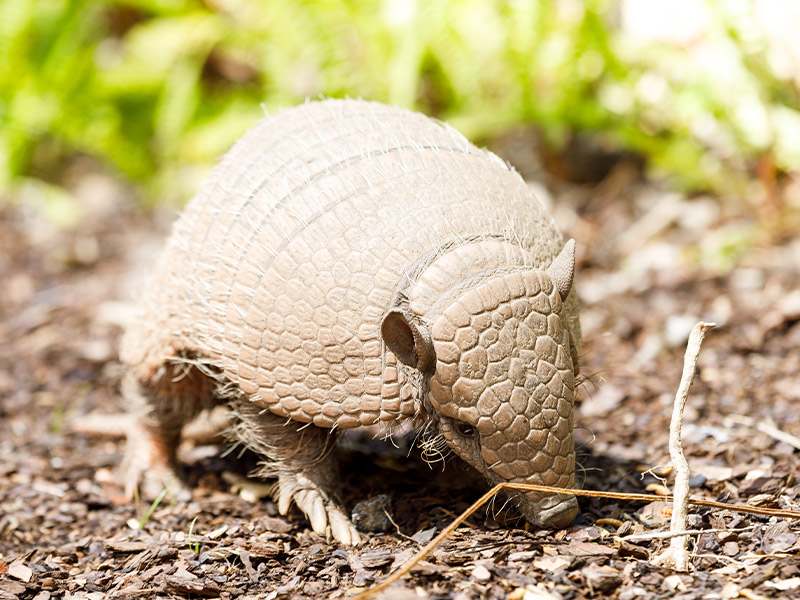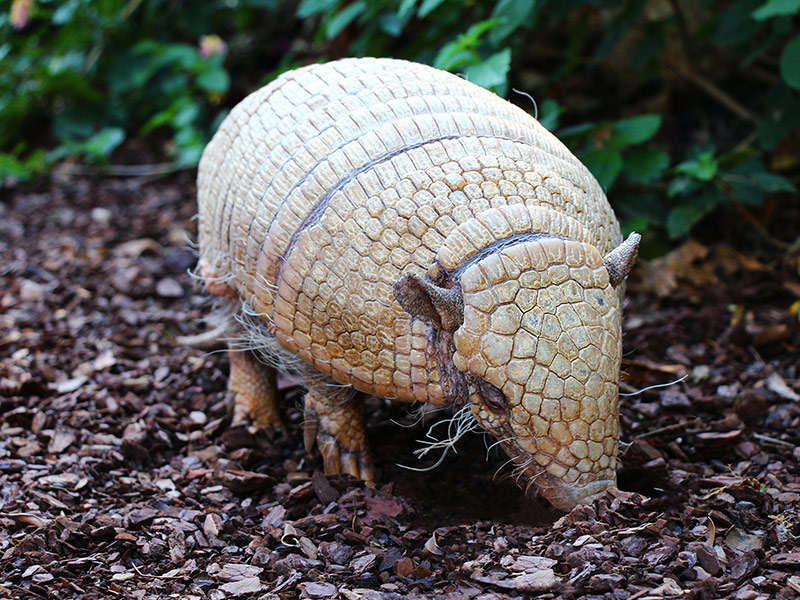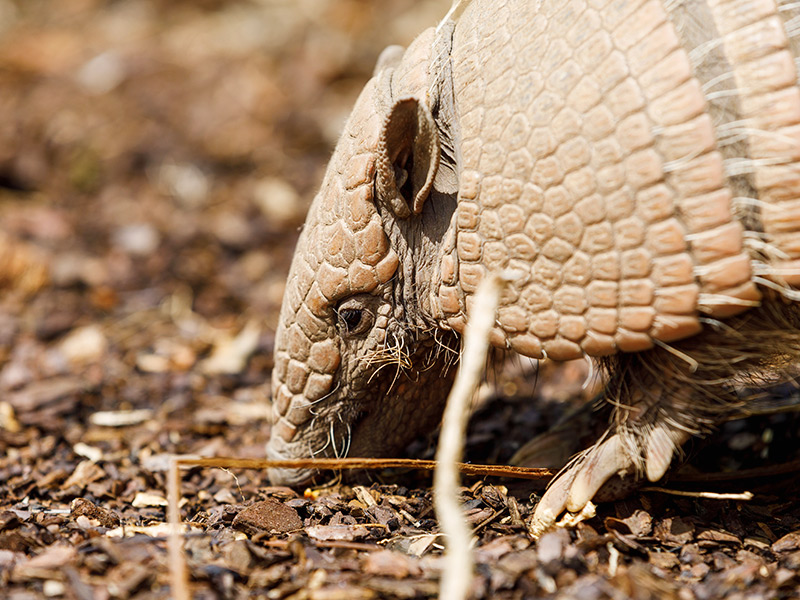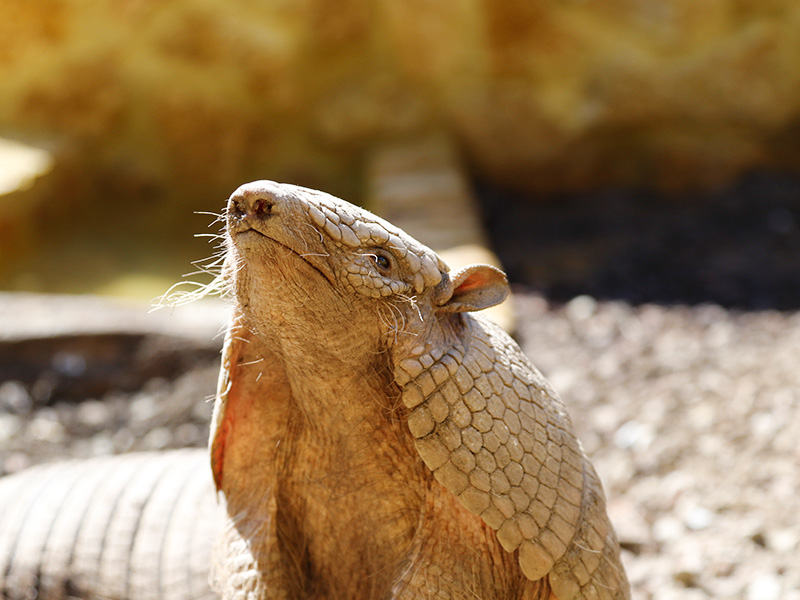Found in across a large area of South America, from southern Suriname and Brazil to Bolivia, Paraguay, Uruguay and northern Argentina.
It is one of the largest species of armadillo. Its body consists of 6-8 movable bands, which are covered by fine grayish brown hair. It has 5 toes and its claws are particularly suited to digging and building burrows. This species emits a characteristic odour, through scent glands located at the base of its tail, which it uses to mark its territory.
It lives in burrows that it digs in open, preferably dry areas, characterised by a single inverted U-shaped entrance. They are diurnal animals, but occasionally come out at night. They are good swimmers and stay afloat by gulping air.
The female gives birth to a litter of 1-3 young, in a nest she has built herself, after a gestation period of 60 to 64 days.
Their main threat comes from humans. Farmers kill them to prevent them from eating their corn sprouts.






















